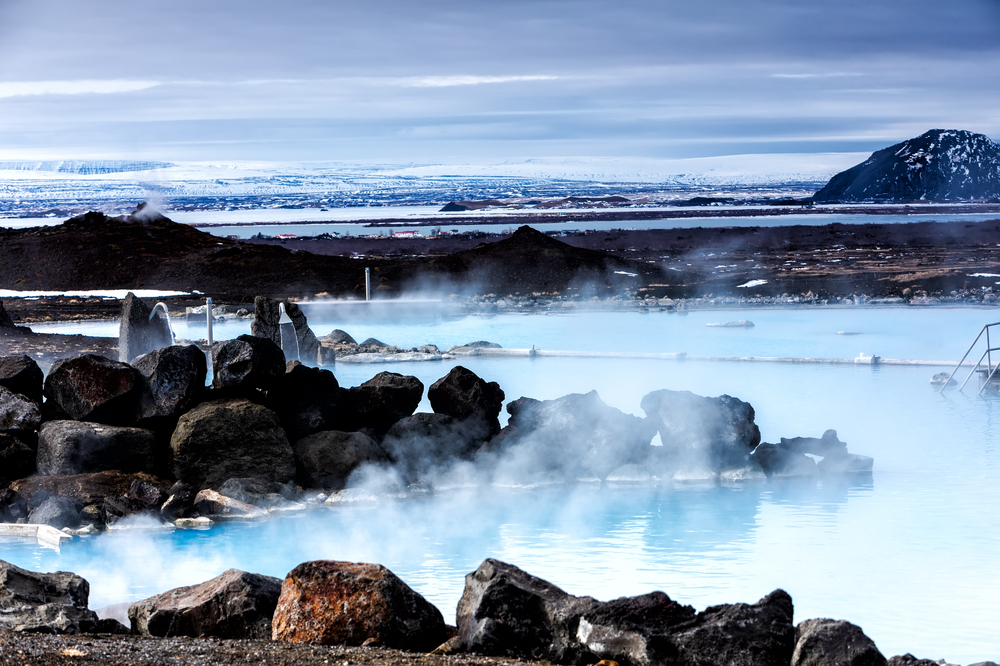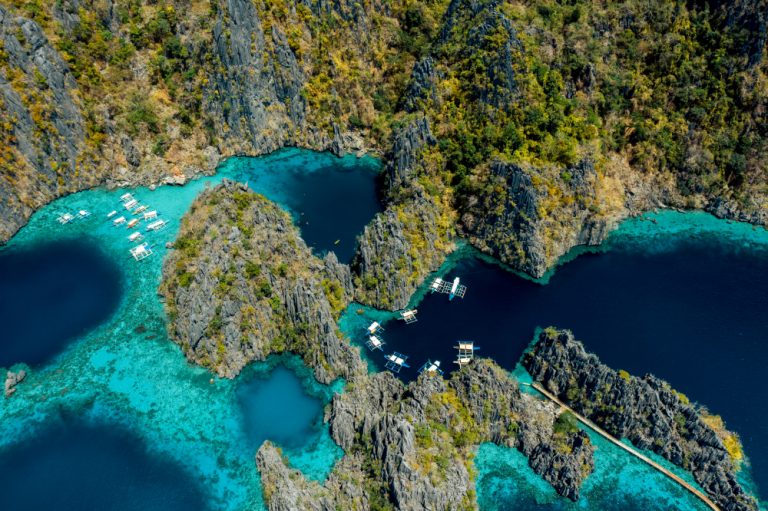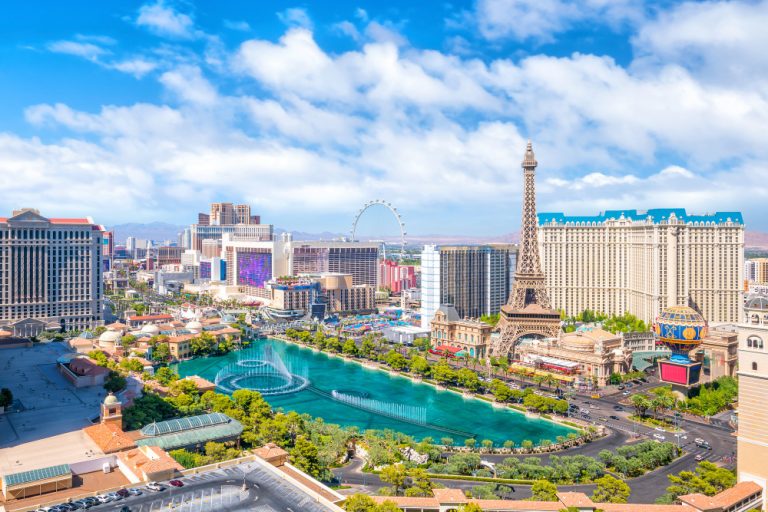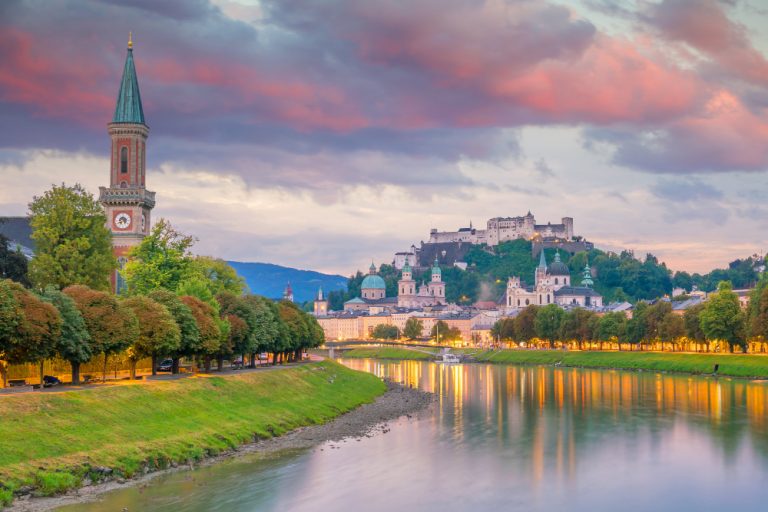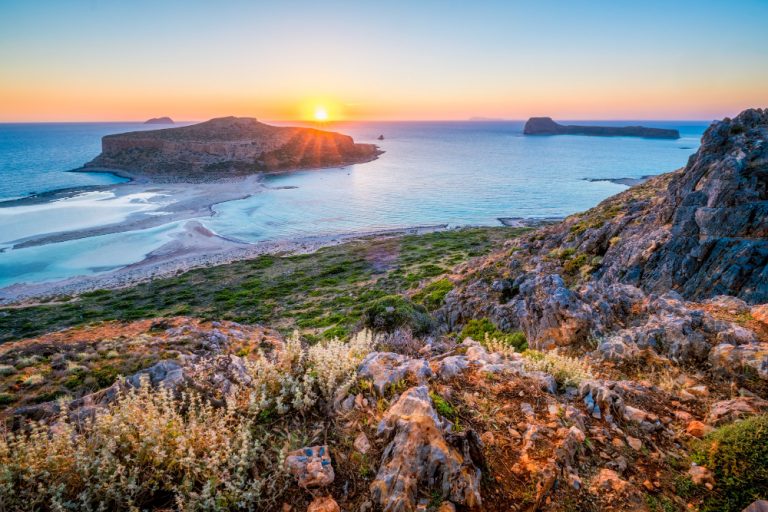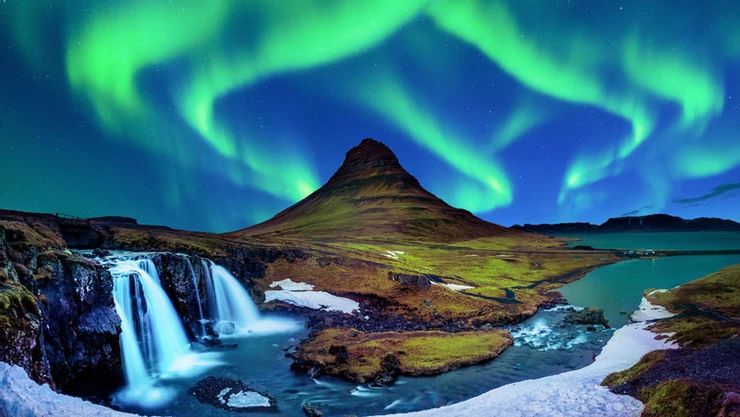Blue Lagoon is a geothermal spa where you can enjoy relaxing baths at an ideal temperature. The composition of its water is a unique mixture of algae ingredients, rich in salts and other minerals. It is recognized worldwide for the medicinal properties of its waters, especially for the treatment of psoriasis.
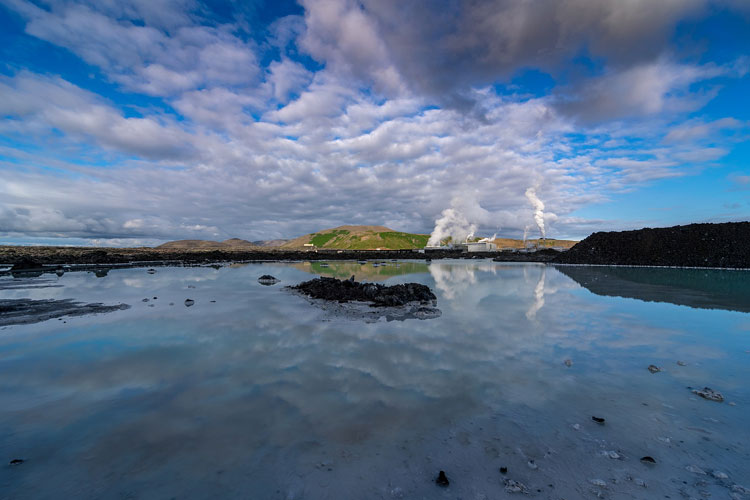
Its waters are unique as an ecosystem, since they are largely composed of seawater (2/3) and a third of rainwater. The turquoise blue color is due to the presence of blue-green algae, although once you get into the water they appear pearly white due to the silicon.
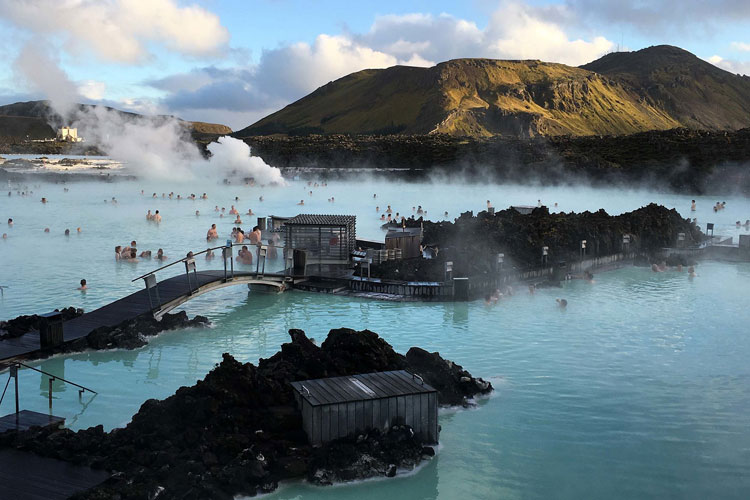

It is located in the youngest lava field in western Iceland, and 45 minutes from Reykjavik.
When was the Blue Lagoon discovered?
The Blue Lagoon was discovered by chance in the late 1970s. It was exploited and the factory used underground water vapor to create electricity and supply the southwestern part of the island. Starting in 1981, the Icelanders began bathing in these warm waters and discovering their healing properties. It was in 1987 when the pools were opened to the public and a few years later when a complex was created around the lagoon.
The setting is spectacular, a contrast between the volcanic black of the rocks with the bright blue of the waters, adding the columns of smoke and jets of steam rising around it.
Accessing the Blue Lagoon
Travelers from all over the world visit the Blue Lagoon to bathe in the warm Icelandic waters that are between 37 and 40ºC.
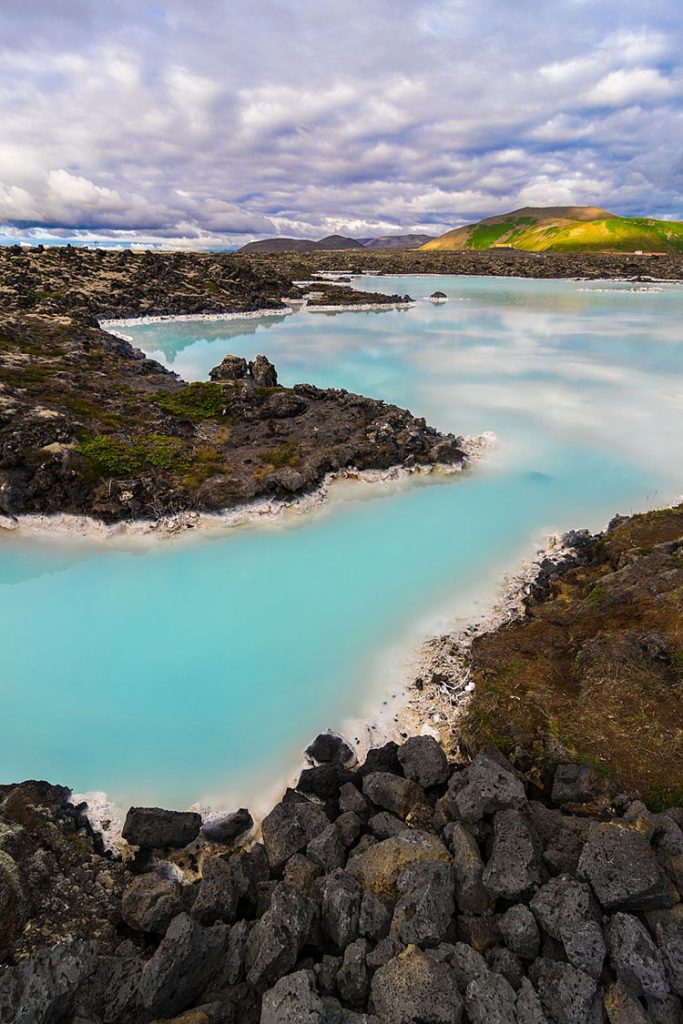

The bathing area has 350m2 of water, so visitors can swim freely anywhere in the complex. Due to the high salinity the body floats easily. In the complex there is also a waterfall that with its force in the fall provides a sensation of massage.
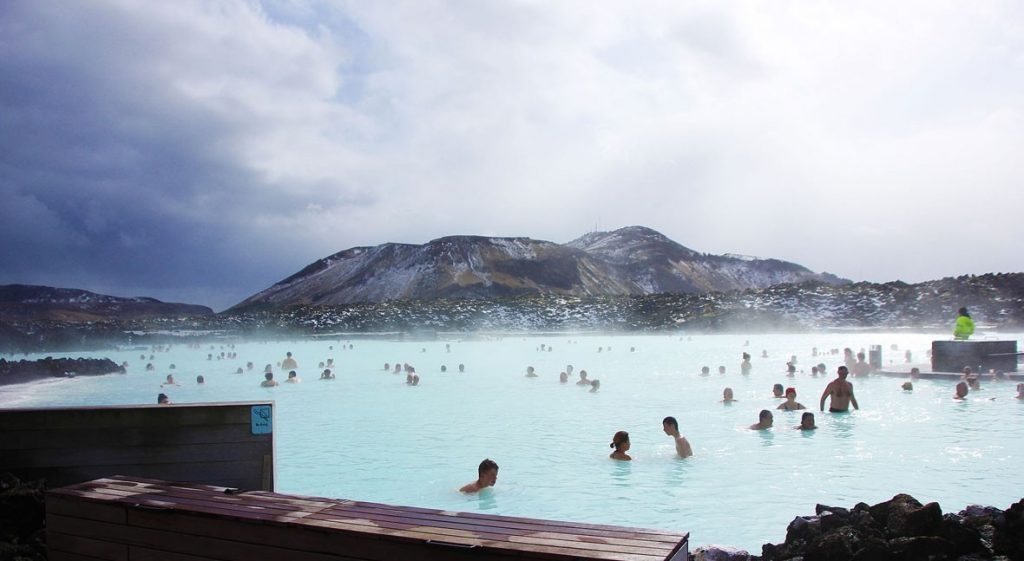

It is open to the public throughout the year and you have to pay an entrance fee to enjoy the baths. Once we arrive, we can submerge ourselves in these waters or let ourselves be massaged by its waterfalls.
The spa offers different health and beauty treatments, and also houses gyms, a shop or restaurants.
Lake Myvatn
In the northwest corner of Iceland we find the Mývatn area. Its lake is the fourth largest lake in Iceland, and where a great variety of fauna and flora abound. This area is protected, forming part of the Mývatn Nature Reserve. This region includes not only the lake, but unusual landscapes such as Mount Námafjall and the colorful bubbling mud pools in Hverir, where there are several hot springs.
The complex located on the lake, evokes a totally natural experience. The sensation of steam rising from the heated waters is unique and you will not have experienced it before.
Despite being in the north of this frozen country, this area enjoys a temperate climate and its winter nights will amaze you if you are lucky enough to enjoy its Northern Lights.
